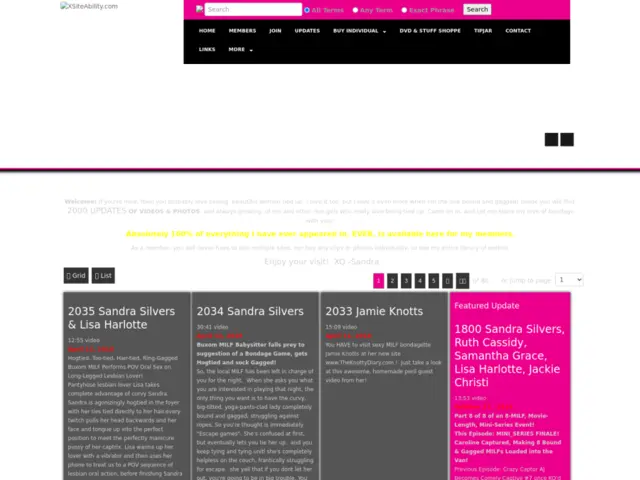Asthma inhalers get all the attention, but COPD sufferers know the real battle often comes down to two heavyweights: Trelegy Ellipta and Symbicort. These aren’t just names you hear in a doctor’s office—they’re daily tools that can make or break your ability to breathe, sleep, and even walk to the mailbox. Here in Melbourne, I’ve watched friends and family weigh every option, wring their hands over insurance headaches, and struggle with devices that make you feel like you need an advanced engineering degree to use. So what actually separates these two mainstays? Let's get right into the science, the practical experience, and—because we all know it's important—the cost on your insurance card.
How Trelegy Ellipta and Symbicort Work: The Science Behind the Breath
When your lungs are working against you, understanding exactly what’s inside your inhaler isn’t just nerdy curiosity—it’s essential. Let’s break down the difference between Trelegy Ellipta and Symbicort, side by side, so you know what you’re really getting with every puff.
Trelegy Ellipta vs Symbicort comes down first to their active ingredients and precisely how they target those inflamed, stubborn airways. Trelegy Ellipta is a triple therapy inhaler. Inside, you’ve got fluticasone furoate (an inhaled corticosteroid), umeclidinium (a long-acting muscarinic antagonist, or LAMA), and vilanterol (a long-acting beta2-agonist, or LABA). Each one does its own job.
- Fluticasone calms down inflammation in your airways. If you picture those tight bronchial tubes getting angry and swollen—fluticasone is the cool head in the crowd.
- Umeclidinium blocks muscarinic receptors. Science talk, yes, but think of it this way: it tells your airway muscles to chill out and not squeeze up so much.
- Vilanterol opens those airways up by relaxing the smooth muscles, making it easier for air to flow. This combo means Trelegy goes all-in on three mechanisms at once.
Symbicort, on the other hand, takes a slightly different tack. It’s a dual therapy inhaler with budesonide (another inhaled corticosteroid) and formoterol (a different LABA). You don’t get that LAMA component like Trelegy, but you do get rapid action—most patients notice Symbicort kicks in a bit faster when you’re feeling breathless.
- Budesonide reduces inflammation, quite like fluticasone in Trelegy.
- Formoterol opens up your airways. But compared to vilanterol, formoterol works a little quicker, which can be a lifesaver in a pinch.
So, what does this all mean for your daily life? If you’ve got severe COPD, especially the type where nothing helps and you’re constantly out of breath, doctors here in Australia will often push for Trelegy. Triple therapy is proven to lower flare-ups—the technical word is exacerbation—compared to dual therapies like Symbicort for advanced cases. One 2021 study in The Lancet even found that patients on Trelegy cut down on emergency hospital visits by 25% versus dual therapies. That’s not small potatoes.
Symbicort shines for folks with moderate COPD or for those sensitive to steroid side effects. If inhaled steroids leave you coughing or hoarse, the slight difference in formulation might be easier on you. I had a neighbor, Margaret, who swears that Symbicort’s fast onset means fewer panic moments if she feels a tight chest walking to pick up her grandkids.
At the end of the day, your doctor’s pick will depend on your lung test numbers, history of exacerbations, and how you handle each medicine’s side effects. But it is worth knowing—you’re not getting the same recipe in both. Think of Trelegy as a complete meal, while Symbicort keeps it simple, like soup and salad.
The Device Showdown: What It’s Actually Like to Inhale
Now here’s where things get really personal. Every COPD patient I know has a strong opinion about their inhaler device. Some people put up with clunky gadgets; others get furious after dropping their inhaler under the couch for the fifth time this week. If you’ve ever coughed up a fortune for a device you can’t even use right, you’re not alone.
The Trelegy Ellipta device is what drug companies call a dry powder inhaler (DPI). What that means for you is: no propellant, no shaking needed, and you’ll need to take a big, consistent, steady puff in. There’s literally just one step: slide the cover open, listen for a click, breathe in deeply from the mouthpiece. Done.
People love that you can’t accidentally double-dose because once you close it, the next dose loads up but can’t be reused. There’s even a dose counter that ticks down so you’re never caught by surprise when it’s empty. I got to test a friend’s Trelegy (don’t worry, I was careful) and it’s truly no-fuss—even with clumsy hands or arthritis, it’s easier than most pill bottles.
But it does mean you need a pretty strong inhalation, which can be tough if your COPD has you gasping on slow days. It’s not great if you struggle to coordinate a forceful inhale—the powder needs muscle to get to your lungs.
Symbicort is different. It comes in two main devices: the Turbuhaler (DPI) and the standard metered dose inhaler (MDI), the kind you press down. The MDI uses a propellant to push the medicine into your mouth, which is ideal if you’re having trouble with a strong inhale. My husband, Dominic, always says his Symbicort MDI lets him dose discreetly in public; there’s nothing to twist, just shake, press, inhale. It’s much friendlier for those days when your lungs just aren’t playing ball.
One big annoyance though: Symbicort’s Turbuhaler has a learning curve. You twist the base, listen for a click, exhale away from the device, and then inhale. The powder can be tricky—you can’t see or feel it in your mouth, so you’re left trusting the count. And if you fumble the process, you might lose a dose. That’s frustrating when medicine isn’t cheap.
If you’re someone who relies on reminders, the clear dose counter on Trelegy Ellipta’s device is less fiddly than the tiny little window on the Symbicort MDI. For people like me (I can barely remember where I put my phone, let alone how many puffs are left), this matters. One product manager told me their research team fielded dozens of angry calls about uncounted missed doses on competitor devices—so don’t underestimate the importance of a good counter!
Here’s a quick comparison so you can see the lay of the land:
| Feature | Trelegy Ellipta | Symbicort MDI/Turbuhaler |
|---|---|---|
| Type | Dry Powder Inhaler | MDI (propellant) or Turbuhaler (DPI) |
| Dose Counter | Large, easy-to-read, can't misload | Small, sometimes hard to read |
| User Steps | Slide, inhale | Shake/press/inhale (MDI), twist/inhale (Turbuhaler) |
| Coordination Needed | High inhalation effort | Less inhalation effort (MDI), moderate (Turbuhaler) |
| Portability | Flat, pocket-friendly | Compact, more parts (MDI), chunkier (Turbuhaler) |
| Misuse Risk | Low | Moderate—can misload or misfire |
Everyone has their preferences—if your hands shake or you get easily confused by steps, Trelegy’s device is a solid bet. But if you need a lighter inhalation or just feel more comfortable with a puffer, Symbicort could work better. Don’t let anyone tell you the device doesn’t matter. It’s your lifeline, after all.

Insurance Battles: Who’s Paying for What, and Where to Find Help
Money talk isn’t glamorous, but it’s the dagger in the heart of every medicine decision. In Australia, we’re lucky to have the Pharmaceutical Benefits Scheme (PBS), but the story isn’t as simple elsewhere. COPD patients in the US or UK, for example, can face wild differences at the pharmacy counter—sometimes more than $400 per month if you’re unlucky with your insurance plan.
Trelegy Ellipta and Symbicort are both PBS-listed in Australia as of June 2025, which makes them affordable for most people if you have a Medicare card. The co-pay is about AU$30 for general patients or only $7.70 if you have a concession card. Still, that only counts if your doctor writes the script with PBS-eligible wording. I’ve heard more than one horror story where a single missing check-box means hundreds out of pocket, so triple check with your pharmacist if you’re getting the subsidized price.
In the US, things are way messier. Trelegy Ellipta is a newer drug, and because it’s still under patent, insurers love to push people toward generics or older inhalers first. Many employer-sponsored and Medicare plans only approve Trelegy if you’ve “failed” other dual-action drugs—yes, the paperwork is real and can feel humiliating. On the other hand, Symbicort has generics out since 2022, so cost is sometimes (not always) a bit lower and approvals easier.
Pro tip: appeal denials. A friend in Seattle got charged US$380 for Trelegy until his doctor handwrote an extra note explaining he’d landed in urgent care twice in six months. Suddenly, the prior authorization went through. Never be afraid to make some noise with your GP or respiratory nurse. And watch for “tiering” tricks—Symbicort might be tier 2 on your plan, but Trelegy could barely make tier 4 with triple the copay.
Some global numbers worth knowing:
| Country | Trelegy Ellipta Cost | Symbicort Cost |
|---|---|---|
| Australia (PBS) | AU$30/$7.70 concession | AU$30/$7.70 concession |
| USA (Retail/Insurance) | US$400+ retail (varies with plan*) | US$350 retail (generics lower) |
| UK (NHS) | £9.90 per item | £9.90 per item |
If you get stuck, there are ways out. For U.S. folks, check copay cards from the drug manufacturer, non-profit assistance programs, or ask your doctor about patient advocacy resources. If your insurance pushes you toward an alternative, there are options. For up-to-date and reputable info, check the list here: Trelegy Ellipta alternative—it’s saved quite a few of my Aussie expat friends living in the States from sticker shock.
Another tip: if you’re constantly switching devices or brands based on cost, ask for a device training session. Pharmacists sometimes offer them for free, especially for seniors. Don’t settle for not knowing what you’re doing—one missed puff can land you in ER, and no one wants that.
Tips & Surprising Facts Every COPD Sufferer Should Know
Even the best drug won’t help if you don’t use it right or stick with it. It’s wild how many people stop using their inhalers because of side effects, hassle with the device, or just frustration with insurance letters stacked up on the kitchen table. So, what are the tricks and little-known truths that chronic patients (and their partners…hi Dominic!) use to keep going?
- Stick a piece of tape on your device labeled with the start date. Sounds silly, but it’s easy to forget when to toss and replace it—especially since most inhalers contain 30 or 60 doses.
- If you’re prone to oral thrush or hoarseness after steroid inhalers, rinse your mouth thoroughly every single time. Some folks add a quick gargle with salt water for good measure. I learned this after a friend’s three-month battle with mouth fungus.
- Plot your medication routine into your phone or smart watch. Trelegy is once-daily, which is easier to remember for some, versus Symbicort’s often twice-daily regimen. Set reminders, and don’t be embarrassed about it—missing even one dose can start a domino effect with COPD.
- Traveling? Always bring an extra inhaler—and a doctor’s note if you’re flying internationally. Australian security is strict but generally good with pharmacy packaging, but I’ve heard of US customs officers grilling people over mystery inhalers.
- Don’t just rely on your doctor for answers. Online COPD communities (like Facebook groups or Reddit’s r/COPD) can be gold mines for real talk on symptom tracking, cleaning devices, and even finding discounts.
- Coughing after inhaler use? Try using a spacer with your MDI (not possible with Trelegy’s DPI, though). It makes a world of difference for some and cuts down medicine sticking to your throat.
- Keep a journal or notes app with how each inhaler feels, both in good and bad weather. Some people notice their device works differently when it’s humid or cold.
One last thing: don’t be afraid to ask your pharmacist to demo the device. Most are more than happy to show you tricks or answer no-nonsense questions—the extra few minutes it takes could save you weeks of struggle. The bottom line: both Trelegy Ellipta and Symbicort can make a real difference for COPD, but you have more control over your experience than you think. Advocate for yourself, try out the device first if you can, and make the insurance side work for you. Because with chronic disease, small tweaks often matter more than the medication label itself.





Ernie Rogers - 17 July 2025
Honestly, I’ve tried both Trelegy Ellipta and Symbicort, and it feels like a toss-up at first glance, but the mechanism of action really matters here. Trelegy combines three meds, which can be a win if you need comprehensive treatment, but the thing is, more meds doesn't always mean better. Symbicort’s simpler approach is sometimes easier to stick with, less hassle. Insurance coverage definitely plays a huge role too; I had to switch because my insurer gave me a better rate for Symbicort, and trust me, the savings were noticeable.
That said, the design of the inhaler itself — Trelegy’s feels more streamlined and less bulky, which is nice when you’re carrying it daily. Anyone else weigh the design factor heavily when choosing an inhaler? It’s weird how little we talk about that.
Also, does anyone else get confused by insurance language? The hidden costs and coverage details are a nightmare to navigate. Would love tips on dealing with that.
virginia sancho - 19 July 2025
Absolutely agree with what you said about insurance. A lot of folks overlook how much that impacts medication access. When discussing Trelegy vs. Symbicort, it's useful to remember that Trelegy’s triple combination receptor targeting—ICS, LABA, LAMA—is super effective for some patients, but not everyone needs all three parts daily. It's crucial to tailor treatment to individual needs.
Design-wise, the Ellipta inhaler offers fewer steps to use, which can be easier for patients who struggle with complicated devices. However, Symbicort’s metered-dose inhaler has its own benefits especially for those needing a rescue option in addition to maintenance.
If you have issues with insurance, talk to your doctor about patient assistance programs. Manufacturers sometimes offer discounts or copay help which could really make a difference.
Feel free to ask if anyone wants advice on using these inhalers properly—proper technique is key for real benefit.
Justin Park - 21 July 2025
Interesting points here. You know what fascinates me? The philosophy behind inhaler design—that intersection of medicine, user experience, and economics. Trelegy Ellipta is like the Swiss Army knife for COPD, but is a multifunctional tool always the best for every patient? Or is there wisdom in sticking with a simpler, more focused approach like Symbicort?
Insurance aspects make me think about how larger systemic forces shape drug availability, and that impacts what choices patients realistically have. It’s almost a Socratic dilemma: knowing the best solution versus having the means to acquire it. The hidden costs and convoluted coverage add to that tension.
Any thoughts on how patient education around these meds could be improved, beyond just the instructions?
Herman Rochelle - 23 July 2025
From a coaching perspective, I’d stress the importance of consistent usage over the perfect inhaler. Both Trelegy and Symbicort have their strengths, but the real 'win' is in adherence. Whichever your doctor recommends, make sure to get familiar with the device, practice the technique, and keep track.
While design and insurance are vital factors, I’ve seen patients gain better control simply by mastering their inhaler regardless of type. So, always ask for a demo and use all the resources available.
Also, stay patient with insurance navigation–call your provider directly, sometimes reps can surprise you with advice on coverage.
Michael Coakley - 25 July 2025
Lol, this obsession over inhaler design always cracks me up. Like, it’s a damn inhaler, not an iPhone. Both work fine if you know what you’re doing. But seriously, the whole insurance drama is a different beast. Feels like a rigged game that nobody wins except the big pharma folks. Trelegy is fancy but comes with that eye-watering price tag, while Symbicort is arguably cheaper but not exactly a bargain either.
Honestly, I wish the system was simpler so people just got the meds they need without the circus. Anyone else feel the same or am I just too cynical here?
And yeah, technique matters, but come on, shouldn’t the meds work regardless of fancy delivery systems?
ADETUNJI ADEPOJU - 26 July 2025
Ah, an enlightening discourse! Yet, let us not forget the intrinsic complexities embedded within the pharmacodynamics of these inhalers. Trelegy Ellipta's tripartite mechanism—ICS, LABA, LAMA—simultaneously mediates diverse receptor pathways to yield an exalted bronchodilatory effect unparalleled in monotherapy approaches. Symbicort’s dual-action merits recognition, yet it scarcely approaches the comprehensive scope proffered by Trelegy.
Nevertheless, one must remain vigilant about the obfuscations perpetrated by insurance conglomerates, whose labyrinthine policies often impede equitable healthcare access. The advent of patient assistance paradigms is commendable, yet insufficient to annul systemic deficits.
Engagement in philosophical contemplation about healthcare systems remains imperative—as does advocacy for an enlightened patient populace.
Janae Johnson - 28 July 2025
Okay, real talk — as much as these posts get hyped about “which is better,” the truth is you just can’t generalize. People experience COPD differently, and the inhaler that’s ideal for one person may be terrible for another. It’s not always a shiny new triple combo versus a classic dual. Sometimes insurance coverage is the deciding factor, yes, but sometimes it’s side effects, or even just how comfortable you feel using the device.
I personally find a lot of these discussions reduce patients to insurance claim numbers or drug mechanism jargon. It’s also frustrating how little input users get before being handed a device, assuming one size fits all. Can we shift the conversation to patient-centered care rather than pharma marketing?
Kayla Charles - 30 July 2025
Building on what's been shared, I want to emphasize that while pharmacology and insurance are critical, what truly impacts quality of life is consistent and proper inhaler use. Patients often hesitate to ask questions or admit to challenges, which leads to poor outcomes.
My advice for anyone deciding between Trelegy and Symbicort: engage openly with your healthcare provider about your daily routines, dexterity, and comfort with devices. Also, don’t underestimate the power of peer support – hearing from others who have battled COPD can illuminate choices far beyond what an article or insurance sheet can.
Remember, every inhaler has a learning curve, and investing time upfront will pay dividends in breathing easier down the line.
Paul Hill II - 1 August 2025
Just want to add a note on the insurance angle. In my experience, many insurance policies vary significantly by state and sometimes employer plans. What might be covered eventually may not be immediately—prior authorizations, appeals, and paperwork hassles can delay access. It’s frustrating but worth sticking with.
Also, regarding device design – I personally found the Ellipta easier to operate on days when my hands aren’t as steady, but to each their own. I would suggest trying demo devices if possible before committing.
And on the mechanism front, I think it boils down to your doctor’s assessment and individual response. Both inhalers have helped many, so aligning treatment with lifestyle is key.
Christine Watson - 3 August 2025
Thanks for all the in-depth insights here! I want to add that emotional support and understanding play a huge role in managing COPD. Switching inhalers or dealing with complicated insurance can be overwhelming and cause anxiety.
If you’re struggling, don’t hesitate to seek counseling or connect with support groups. Sometimes talking through frustrations, side effects, or fears can be as important as the medication itself.
Regarding the technical stuff, I found learning videos on proper inhaler use really helpful—they made a difference in my control symptoms. So anyone doubting which inhaler to choose, also consider what resources your provider offers for education.
Millsaps Mcquiston - 4 August 2025
Look, as someone who’s been navigating this for years, Trelegy Ellipta’s design is hands down more user-friendly—less fiddling, more straightforward. Symbicort isn’t bad, but it feels bulkier to me. Having multiple meds in one device cuts down the hassle hugely.
Regarding insurance, it's a mess and it’s frustrating that it sometimes dictates your health, not your doctor. I’ve seen too many people stuck with less effective meds just because of coverage gaps. We really need more transparency and support in that area.
Mechanism-wise, Trelegy’s three-in-one formula can be a game changer for some, but you gotta watch for side effects. It’s not perfect for everyone. Always talk to your doc before making a switch.
virginia sancho - 6 August 2025
Adding on to the point about demo devices, don’t hesitate to ask your pharmacist or doctor to walk you through the inhaler in person. Many patients skip this step and end up using the device improperly, which renders the best meds useless.
Oh, and for anyone worrying about side effects, keeping a symptom diary can help differentiate what’s from medication and what’s from COPD progression.
Lastly, remember that health insurance formularies change frequently, so staying informed yearly can save you a headache and money.